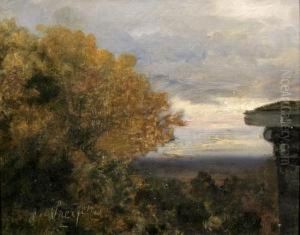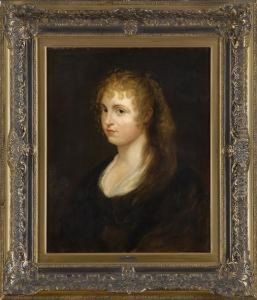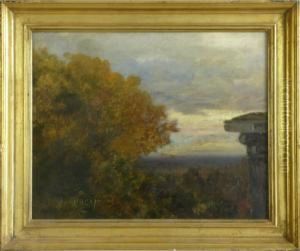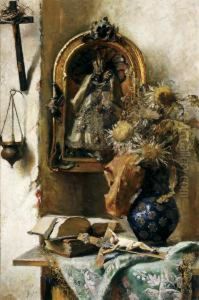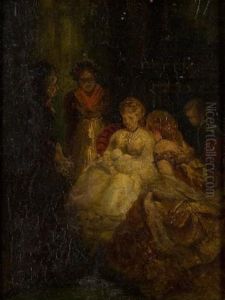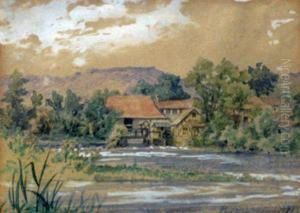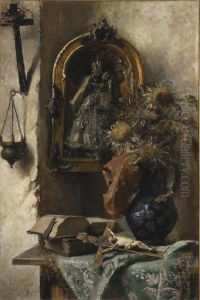Ernest Preyer Paintings
Ernest Preyer was a German-born painter who became known for his work in the United States, particularly in Cincinnati, Ohio. Born on February 8, 1849, in Barmen, now a part of Wuppertal, Germany, Preyer was drawn to the arts from an early age. He pursued his artistic education in Düsseldorf, studying at the renowned Kunstakademie (Academy of Fine Arts). The Düsseldorf Academy was an influential art school in the 19th century, known for its rigorous training and emphasis on classical painting techniques.
After honing his skills in Düsseldorf, Preyer emigrated to the United States in the early 1870s, a period when many European artists were seeking new opportunities abroad. He settled in Cincinnati, which was emerging as a vibrant cultural center in the Midwest, partly due to the influx of German immigrants like himself. Cincinnati boasted numerous cultural institutions, including the Cincinnati Art Academy, where Preyer would later teach.
Preyer quickly integrated into the local art scene and became a respected member of the artistic community. He was particularly adept at still life painting, an art form that was gaining popularity in the United States during this time. His work often featured delicate and precise depictions of flowers, fruit, and other objects, rendered with meticulous attention to detail and a clear understanding of light and shadow. His still lifes are characterized by a sense of tranquility and the lush realism that was favored by American audiences.
Aside from still life paintings, Preyer was also known for his portraiture and genre scenes. However, it is his contribution to still life painting that solidified his reputation. His paintings were widely exhibited and collected, and he was a regular participant in the art community's exhibitions and events.
Ernest Preyer's impact on the Cincinnati art scene extended beyond his own artistic production. As a teacher at the Cincinnati Art Academy, he influenced a generation of young artists, imparting the techniques and principles he had learned in Düsseldorf and adapted to the American context.
Preyer lived through a dynamic period in the history of art, witnessing the transition from traditional academic styles to the beginnings of modernism. Despite the shifts in artistic trends, he maintained his commitment to the classical style throughout his career.
Ernest Preyer passed away on January 10, 1930, in Cincinnati. His legacy is preserved in the collections of several institutions and in the continued appreciation of his work by art historians and collectors. His contributions to the Cincinnati art community and to the genre of still life painting have made him a notable figure in the history of American art.
